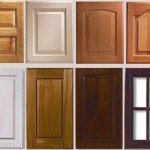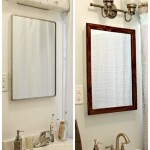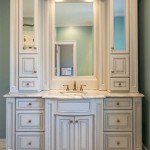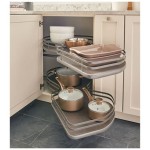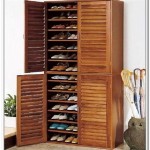Replace Old Medicine Cabinet Mirror
Bathroom medicine cabinets are essential for storing toiletries and medications, keeping them readily accessible yet safely tucked away. Over time, the mirror attached to the cabinet can show signs of wear and tear, from minor chips and scratches to significant silvering loss and discoloration. Replacing this mirror can dramatically refresh the bathroom's appearance and improve functionality.
Assessing the Current Mirror and Cabinet
Before purchasing a replacement mirror, carefully examine the existing medicine cabinet. Note the dimensions of the current mirror, including its height, width, and thickness. Determine how the mirror is attached to the cabinet. Some mirrors are glued directly to the cabinet door, while others are held in place with clips or frames. Understanding the existing setup is crucial for selecting a compatible replacement and choosing the right installation method.
Evaluate the condition of the cabinet itself. If the cabinet shows signs of damage or deterioration, such as water damage, rust, or warped wood, it might be more cost-effective to replace the entire unit. However, if the cabinet is structurally sound, replacing only the mirror is a viable option.
Choosing a Replacement Mirror
Several factors influence the selection of a suitable replacement mirror. Budget is a primary consideration, as mirror prices vary depending on size, thickness, and features. Standard mirrors are generally the most affordable option. Higher-end mirrors might offer features like beveled edges, decorative etching, or magnifying capabilities.
The mirror's size is critical for proper fit and aesthetics. Carefully measure the dimensions of the old mirror to ensure the replacement matches. If a slightly different size is desired, consider the overall proportions of the bathroom and the medicine cabinet itself. A mirror that's too large or too small can look out of place.
Mirror thickness is another important factor. Thicker mirrors are generally more durable and less prone to warping or distortion. However, a very thick mirror might add excessive weight to the cabinet door, potentially stressing the hinges. A common thickness for medicine cabinet mirrors is around 1/4 inch.
Removal of the Old Mirror
Removing the old mirror requires careful attention to safety. Wear gloves and eye protection throughout the process. If the mirror is glued to the cabinet, gently pry it loose using a putty knife or a thin, flat tool. Apply steady, even pressure to avoid cracking the mirror. Heating the mirror with a hairdryer can soften the adhesive and make removal easier.
If the mirror is held in place with clips or a frame, carefully remove the fasteners. Inspect the cabinet door for any remaining adhesive residue. Clean the surface thoroughly with a suitable adhesive remover, ensuring it's compatible with the cabinet material.
Installation Methods for the New Mirror
Several methods can be used to install the new mirror. Mirror adhesive is a common choice. Apply the adhesive evenly to the back of the mirror or to the cabinet door, following the manufacturer's instructions. Carefully position the mirror and apply firm pressure to ensure proper adhesion.
Another option is to use mirror clips or a frame. This method offers greater flexibility for future mirror replacements. Ensure the clips or frame are compatible with the cabinet door and the thickness of the new mirror. Securely attach the clips or frame to the cabinet door, then carefully insert the mirror.
Special Considerations for Framed Cabinets
If the medicine cabinet has a frame around the mirror opening, the replacement process might differ. Measure the inside dimensions of the frame to ensure the new mirror fits correctly. Some framed cabinets require removing the frame to access the mirror. Others allow for the mirror to be inserted or removed from the front.
When replacing a mirror in a framed cabinet, consider the aesthetic relationship between the frame and the new mirror. A simple, flat mirror often works well with ornate frames, while a beveled or decorative mirror might complement a simpler frame.
Maintaining the New Mirror
Once the new mirror is installed, proper maintenance can prolong its lifespan. Regularly clean the mirror with a glass cleaner and a soft cloth. Avoid using abrasive cleaners or harsh chemicals, as these can damage the mirror's surface. Prevent excessive moisture buildup in the bathroom, as this can contribute to mirror deterioration.
Inspect the mirror periodically for any signs of damage, such as chips or cracks. Address these issues promptly to prevent further damage and ensure the mirror remains securely attached to the cabinet.

Diy Medicine Cabinet How To Replace A

Easily Replace An Old Medicine Cabinet Wg Wood S

Diy Niche Shelf Old Bathroom Medicine Cabinet Makeover A Piece Of Rainbow

Diy Niche Shelf Old Bathroom Medicine Cabinet Makeover A Piece Of Rainbow

Medicine Cabinets Ideas 7 Diy Updates Bob Vila

Medicine Cabinets Ideas 7 Diy Updates Bob Vila

How To Turn A Mirror Into Medicine Cabinet Diy Bathroom

How To Turn An Old Medicine Cabinet Into Open Shelving My Uncommon Slice Of Suburbia

Updating A Brass Medicine Cabinet Flashback Friday The Kim Six Fix

How To Turn An Old Medicine Cabinet Into Open Shelving
Related Posts

